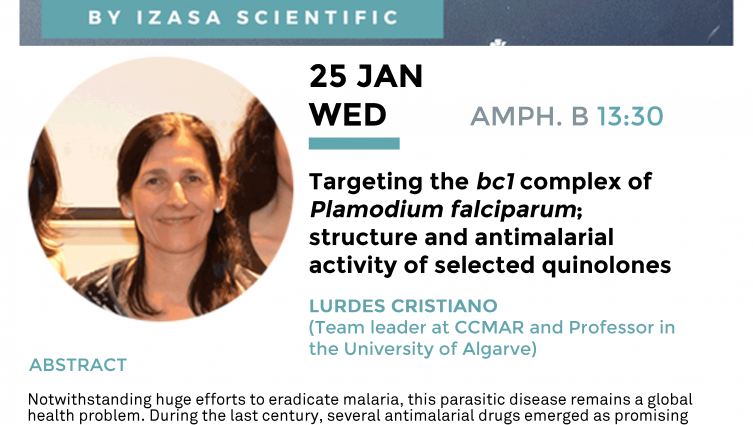CCMAR Seminars by Izasa Scientific: Targeting the bc1 complex of Plamodium falciparum; structure and antimalarial activity of selected quinolones
CCMAR SEMINARS
25th JAN | 13:30 | Anf. B (CP)
Targeting the bc1 complex of Plamodium falciparum; structure and antimalarial activity of selected quinolones
(Team leader at CCMAR and Professor in the University of Algarve)
Abstract
Phytophthora and Halophytophthora species belong to the oomycetes, Kingdom Straminipila. Phytophthora is arguably the world’s most destructive genus of plant pathogens. Many devastating declines of trees and natural ecosystems are driven by non-native Phytophthora species which remain unnoticed in their native environment, and after their introduction to other continents become invasive threatening a non-adapted and highly susceptible flora. Well documented examples include diebacks of forests and heathlands in Australia, ink disease of chestnut and the decline of cork oak and other Quercus species across Europe, and 'Sudden Oak Death' in California. During a recently finished BiodivERsA project RESIPATH, 32 known and 10 new Phytophthora species were detected by the UAlg research group in forests, rivers and forest nurseries across Portugal. In 2015 and 2016, a small-scale survey in the salt marshes and lagoons of the Ria Formosa and the Ria de Alvor demonstrated the widespread occurrence of one known and 10 previously unknown new Halophytophthora species which have to be scientifically described and named. Their roles in the ecosystem and their possible threat to the plants in these salt water ecosystems are unknown and have to be studied urgently.




